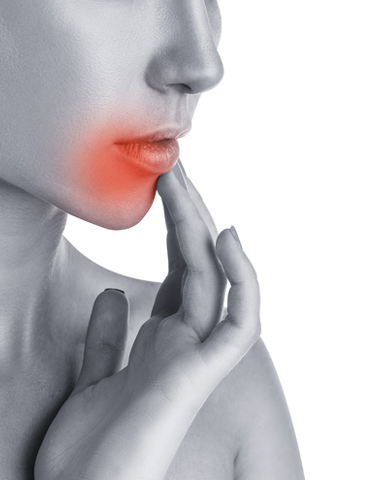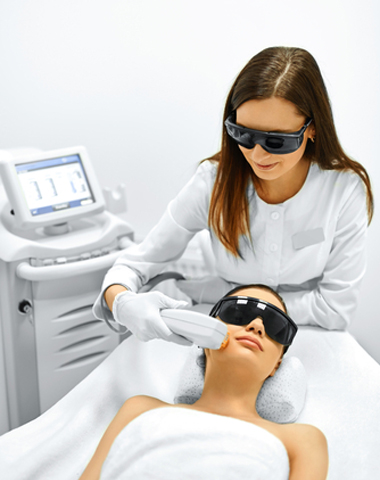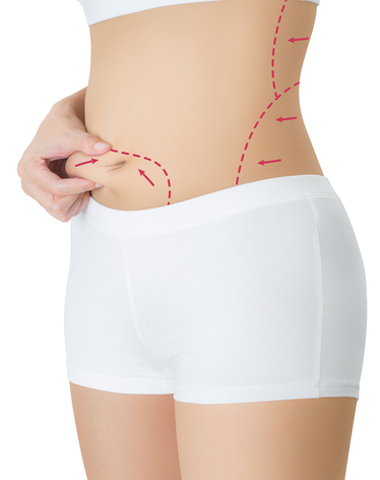Aging has a way of creeping up on us. It starts with faint smile creases, forehead lines, or crinkles at the corners of your eyes. Those wrinkles in your skin are a result of smiling, frowning, laughing, and squinting over the years; though smoking, sun damage, dehydration, and some medications can cause wrinkles as well.
We can help to smooth those lines out, for both men and women, by addressing the root of the problem: your facial muscles. By injecting a neuromodulator (botulinum toxin type A) beneath the surface of your skin, we can reduce the muscle contractions in your face, ultimately smoothing those creases and softening those lines, bringing back your youthful skin.
While this neuromodulator is best known for its use in cosmetic enhancement, it’s also an important therapy for non-cosmetic applications in the treatment of pain disorders like chronic migraine and medical conditions like hyperhidrosis (excessive sweating).
Reduce Migraine Frequency
If you suffer from migraines, you know they are far worse than just a headache. An estimated 2.7 million Canadians suffer from migraine, a debilitating condition characterized by intense, pulsating head pain, nausea, vomiting, and sensitivity to light, sound, and smells.
While there is no cure for migraine, neuromodulator treatments can prevent up to nine migraine days per month with quarterly injections, vastly improving your quality of life.
Lessen Excessive Sweating
While approximately 950,000 Canadians suffer from excessive sweating, few realize that it’s a treatable medical condition. Hyperhidrosis is an excessive sweating disorder that impacts confidence, social comfort, emotional wellbeing, and even clothing choices. Sufferers can experience intense sweating in more than just their underarms, they can also sweat profusely from their hands and feet as well as their head and face.
When other treatments aren’t working, neuromodulator injections can result in an 82-87% decrease in sweating by blocking the chemical signals from the nerves that stimulate the sweat glands.
Frequently Asked Questions
While this neuromodulator is very popular, you might not understand how it works, how it’s used or what to expect. Below are some of our frequently asked questions, but if you have concerns that aren’t addressed here, please feel free to contact us.
What are neuromodulators and how do they work?
This neuromodulator (botulinum toxin type A) is a drug made from a neurotoxin produced by the bacterium Clostridium Botulinum. Interestingly, this toxin can cause a muscle paralysis called botulism (usually connected to food poisoning). But even though botulism can cause paralysis, scientists have weakened this toxin to cause controlled muscle relaxation. This neuromodulator was approved by the FDA in the 80s when scientists discovered it could stop uncontrolled blinking and lazy eye.
Since then, dermatologists have used it to treat wrinkles, excessive sweating, and chronic migraine. This neuromodulator works by blocking nerve signals from reaching the muscles, preventing them from tightening forcefully, which causes the muscles to relax and the creases in the skin to soften. Don’t worry though, this neuromodulator is safely used the world over, with over 6 million treatments performed annually.
Does This Neuromodulator hurt? How long does it take?
Because this neuromodulator is injected using fine needles, it causes minor discomfort, like a pinch. Some patients will experience tenderness near the injection sites. You know your body best, if you anticipate discomfort, let your dermatologist know; we can recommend a numbing cream or ice to soothe the area. Typically, your face may feel taut and you will have some minor bruising and swelling, but it will disappear after 24 hours.
Overall, the neuromodulator injections are quick, it only takes a few minutes so you can pop in during your lunch break and still have time to eat. A session for migraine treatment takes a bit longer as there are seven injection sites with about 30 injections overall.
How soon will I see results?
The average person, with moderate to severe wrinkles, will see visible results from neuromodulator injections within days. While each person’s skin and results may vary, your wrinkles and lines will continue to fade for about 30 days, though the results can last up to four months, at which point you’ll need another treatment.
For migraine sufferers, neuromodulator treatments tend to be more successful with each new treatment. If you’re getting this neuromodulator for excessive sweating, your symptoms will gradually fade over about a week and gradually return up to six months when you’ll need another treatment.
What happens if I don’t continue treatment?
If you don’t continue treatment, your symptoms (whether lines and wrinkles, migraine, or excessive sweating) will gradually return.
Isn’t this neuromodulator expensive?
This neuromodulator isn’t just for the rich and famous. In fact, it’s relatively affordable and for migraine and excessive sweating patients, most health benefit plans cover part of the cost. Exact costs vary depending upon individual treatment plans. We’ll advise you of the costs for your treatment at your consultation.
Are there any potential side effects from neuromodulator injections?
Temporary side effects may include sensitivity at the injection sites, dry mouth, fatigue, headache, neck pain, vision problems, and dry eyes. Minor symptoms of an allergic reaction may include itchiness, rash, and welts, but if you experience wheezing, dizziness, or faintness, seek medical attention as soon as possible. For more information on possible side effects, consult with your dermatologist.
Am I a good candidate for this neuromodulator?
If you are between the ages of 18 and 65 years old and have great overall health, you are most likely a good candidate for this neuromodulator, but the best determinant is a consultation at our south side Edmonton Dermatology Clinic. Fill in the form below to book your neuromodulator consultation.


















